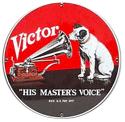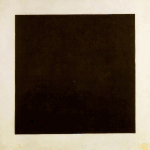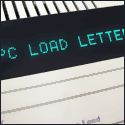|
Mister Speaker posted:I want to do more interesting things with simple sines and layers of distortion. Simple saturation isn't enough; I want to explore the kinds of effect chains and parameter modulation that can create complex harmonics and gritty textures out of one single sine. It's been a while since I watched that GDC talk so I don't recall the details but I think Mick Gordon layered a lot of different signal chains together. He probably introduced a lot of the movement by crossfading or sidechaining between the different layers which, individually, might be fairly static for the most part. I'd also wager that he ended up doing a lot of stuff "in post" by chopping and layering selected bits of the original recordings by hand to form the final riffs too.
|
|
|
|

|
| # ? May 25, 2024 23:09 |
|
Any of the modulation effects would be best applied after any saturation. Remember that a sine wave by definition won't have any harmonics, those are created entirely by whatever distortion you're adding. Beyond that you may get more useful results by heavily low pass filtering more complex things like detuned saws and then adding distortion and fx to that.
|
|
|
|
Like the guy above me said, try low-passing the sub-bass but add some resonance.
|
|
|
|
e:fb, it would help if I actually made sure I read the last page of the thread.
|
|
|
|
|
https://www.youtube.com/watch?v=0pMDVBkiLso $3,999
|
|
|
|
Right, I know that running directly to a phaser or flanger isn't going to do much to a simple sine, harmonically. So here's the approach I'm starting with: I'm going to throw some of Live's basic saturation - 24dB of Analog Clip mode to start with some simple warmth - at each 'return' track for the sub, then highpass them all immediately after, before throwing more interesting saturation and playing around with time-based effects to create harmonics. Question about highpassing: What's the most transparent way to do this in Live? HPF Auto Filter set to 120Hz? I see a lot of people using Multiband Dynamics as a simple crossover, is this because it's linear-phase, or 'cleaner' in some way, than using a filter?
|
|
|
|
Mister Speaker posted:Right, I know that running directly to a phaser or flanger isn't going to do much to a simple sine, harmonically. So here's the approach I'm starting with: I'm going to throw some of Live's basic saturation - 24dB of Analog Clip mode to start with some simple warmth - at each 'return' track for the sub, then highpass them all immediately after, before throwing more interesting saturation and playing around with time-based effects to create harmonics. im not sure that i would highpass before putting things into the chain, gunning for transparency when you're trying to turn a sine wave into a gunky bass sound with only effects. i would just whang the whole raw sine into your nutso chain(s) and aggressively EQ away anything that doesn't work after it all comes out the other end. also don't forget the feedback loops!
|
|
|
|
The other thing mick does is layer some modulated noise over the sine that is in sync with the sine frequency. So let's say you have your sine and its at 40hz, about E1 on the keyboard, make it play with a fully open volume envelope (no attack, full decay and sustain, no release) for four bars so you get a nice long note to play with later. You then layer noise (white, brown, pink all have slightly different characters) on another track, whether you use audio or just the noise out from analog or whatever doesn't matter. Make that go for four bars too. Put an autopan on this noise track, set the phase to 0, you now have it as a mono tremolo. Set the rate to 40hz, now it pulses in time with the wavelength of the sub, you'll probably need to tweak your mixer level a bit so its not overwhelming the bass. From here, you can render down both these tracks into a single sample, stick it in Simpler and you have the foundation for a Mick Gordon sine bass sound. As long as your noise is modulated at the same frequency the initial sine is playing at this should help you get DOOMier, if your root sine is 60hz (C) then set the autopan to that. I'm sure you're already aware if you're into DnB but E1-G#1 are your bread and butter for sub roots, lower and it gets lost, higher and it stops having that 'sub' quality to it. NonzeroCircle fucked around with this message at 12:50 on Aug 18, 2018 |
|
|
|
What in god's name is this crazy thing: https://reverb.com/item/13948602-max-kohl-helmholtz-keyboard-hybrid-synthesizer-c-1905 Shame it doesn't work so there's no demo.
|
|
|
|
Anime Reference posted:What in god's name is this crazy thing: https://reverb.com/item/13948602-max-kohl-helmholtz-keyboard-hybrid-synthesizer-c-1905 A very small electric celesta
|
|
|
|
NonzeroCircle posted:The other thing mick does is layer some modulated noise over the sine that is in sync with the sine frequency. This is interesting, thanks. I've tried it and ran it through some of the effect chains I created the other night for the sine. One of them in particular has some of the 'scream' qualities present in some of the dronier background noises in the DOOM soundtrack, I can't seem to get any decent 'crunch' and 'twist' out of it with the noise on top though. Do you think this is possible to do in a synthesizer like Serum or is it one of those things that can only be done through combining the noise and sine through a sampler? I'm thinking maybe using a keytracked LFO to modulate Serum's Noise OSC volume, the issue is getting the keytracking right - Serum's LFOs go up to 100Hz which should well be fast enough provided I'm staying in sub ranges, no?
|
|
|
|
You should be able to do it that way too. I gave it a go earlier and even lower mod rate noise gives it a cool effect. I reinstalled doom earlier so uh, spent more time playing that than synths today!
|
|
|
|
For any Canadians, Moog Audio's started taking preorders for the OP-Z. No price or release date known thus far. I told myself I was over the hype but I'm weak. I can always cancel (I probably won't!).
|
|
|
|
Hey, does anyone here know if the sync out on the Korg volcas and sq-1 is able to send cv clock to eurorack sequencers/dividers etc? Is it compatible?
|
|
|
|
Gorewar posted:Hey, does anyone here know if the sync out on the Korg volcas and sq-1 is able to send cv clock to eurorack sequencers/dividers etc? Is it compatible? technically thatd be gate or trigger rather than cv, but yeah a buncha people play euro with them
|
|
|
|
Gorewar posted:Hey, does anyone here know if the sync out on the Korg volcas and sq-1 is able to send cv clock to eurorack sequencers/dividers etc? Is it compatible? It works fine. SQ-1 has more options for it like step resolution and steps per pulse. It is such a nice sequencer for euro I just ordered a second one for my setup yesterday. Volcas sync in/out also work fine too but the resolution is fixed at two steps per pulse I think so you need to use gates instead of trigger to send it a sync signal. (e: just realized this actually allows to introduce swing in a volca sequence by changing the duty cycle of the gate sent to the volca) They look like toys but they are really capable toys SpaceGoatFarts fucked around with this message at 07:02 on Aug 22, 2018 |
|
|
|
I know the Volca Sample you can set the resolution to I think 1/2 or 1/4 by starting it in setup mode. I can't for the life of me remember how to do that and my manuals are all packed away right now. I have some issues with voltage level to/from my Mother-32s, but I think that's more due to the sequencer on the M32s than anything else. If I'm doing anything that's getting actually recorded I'm usually running MIDI to sync anyway, so it's moot, but yeah you can probably do what you want as long as you check your Volca manual to know what you're outputting/inputting.
|
|
|
|
Yep, you can change that and other possibly useful stuff via secret boot control panel, like having it go up to 600 bpm.
|
|
|
|
Yes the sample is really great. I downloaded a sample pack with basic waveforms in it that you can loop in a part turning it into a synth voice.
|
|
|
|
Better and better https://www.youtube.com/watch?v=NUiMIeFnqIA
|
|
|
|
This makes me very unhappy.
|
|
|
|
groverstudio
|
|
|
|
SpaceGoatFarts posted:groverstudio load-bearing cases will get you every time
|
|
|
|
Anyone have experience with the volca mixer? It looks nice and small. I currently have a behringer that's too big to live on my computer desk and annoying to plug in whenever I want to use and also has a really bad hum and I hate it. I just want something small with at least three inputs.
|
|
|
|
I think you would be better served with this. https://mackie.com/products/mix-series Volca mix unlike the other volcas looks incredibly lacking for the price. If you want something smaller there are also a few micro mixer but I would only recommend them as portable options
|
|
|
|
SpaceGoatFarts posted:I think you would be better served with this. I’d also throw in endorsements for competing Soundcraft and Yamaha mixers. They’re all generally good and have slightly different features/inputs and some will be on sale at different times so look around.
|
|
|
|
Oldstench posted:load-bearing cases will get you every time wood isn't that expensive jeez
|
|
|
|
Oldstench posted:This makes me very unhappy. "Wait, what's wrong with this? The cables are not plugged in, is that it? Or is it - AAAAAAAAAH" Load-bearing cardboard indeed. Did anyone tell this person that their robot fart noise factory is more likely to be triangle shirt waist factory? edit: triangle shirt wave 
|
|
|
|
Cardboard cases are pretty strong tbh. Many people - divkid, mylar - have used them in the past. With a good amount of tape and good design, they can last a long while. Mylar used to play live with his and lug it across country. When cases cost hundreds, a cardboard rig means more money for modules!
|
|
|
|
I can see a few poking out, but you just know every single one of those is using a flying bus cable
|
|
|
|
I just used a bunch of ATX supplies what’s the difference
|
|
|
|
Plavski posted:Cardboard cases are pretty strong tbh. Many people - divkid, mylar - have used them in the past. With a good amount of tape and good design, they can last a long while. Mylar used to play live with his and lug it across country. When cases cost hundreds, a cardboard rig means more money for modules! Cases may cost hundreds but a couple of 1x2 lengths of wood from home depot might cost $20 at most. They'll even cut the wood per your measurements for free!
|
|
|
|
Gorewar posted:Cases may cost hundreds but a couple of 1x2 lengths of wood from home depot might cost $20 at most. They'll even cut the wood per your measurements for free! Just FYI those cuts are not precise and if you try to make a box using wood cut by a dude at home depot it will definitely be lopsided
|
|
|
|
My HS-60 (Juno-106 wearing a mustache and glasses) has been acting up lately and at first I was worried it might be the infamous filter chip issue, but I ran through some test procedures to isolate the problem and discovered that all six voices were getting distorted and crackly, and narrowed it down to the output jacks and level switch combined with the volume knob all being dirty (flipping the output level switch or turning the volume knob caused crackling and volume dropouts), so I finally got around to hitting the switches, sliders, knobs and jacks with a spritz of Deoxit and I'm happy to say it sounds rich and beautiful and is still full of that creamy 80's Roland analog goodness.  My next course of action is to eventually order six chip sockets for the filter chip mini-boards, unsolder them from the board, soak them all in acetone to remove the faulty epoxy coatings (which become conductive as they age and start shorting out the chips, causing the filters-going-bad issue), and then reseat them into the new sockets making for easy removal & re-cleaning or replacement in the future if one of them does still crap out after removing the epoxy (if you're thorough getting the epoxy off, it shouldn't happen, but sometimes you can miss a tiny flake stuck on one of the traces on the filter board). Once I futureproof the filter chips, I may look at getting the Kiwi-106 upgrade kit that adds a sequencer/arp/chord generator and more modulation options, iincluding the ability to modulate PW by the envelope (the removal of the arp and ability to modulatie pulse width with the envelope are the two biggest features it loses out on vs. the Juno-6/60) toadee posted:Just FYI those cuts are not precise and if you try to make a box using wood cut by a dude at home depot it will definitely be lopsided More importantly, the wood ain't the pricey part of any case, it's the power supply. If someone designed, built and sold a decent cheap PSU that didn't require a wallwart, and some cheap rails, those would allow you to DIY up a case waaaaaaaaaay cheaper. But even the DIY case poo poo Doepfer and others sell costs a loving mint, like $60 for a pair of 84 HP rails and over $100 for a cheap lovely PSU that's basically a wall-wart and a bus board with a socket to plug the wall-wart into. Militant Lesbian fucked around with this message at 21:00 on Aug 26, 2018 |
|
|
|
Since we don't really have a sampling thread, figured I would post this shameless self-plug here. The website Tracklib.com had its first Beat Battle Competition where they offered up two songs for free download that users could flip and submit on instagram. We were only allowed a 30 second upload which isn't very much time but I definitely had fun with it. The winner gets a free license for the track and a bunch of download credits. I decided to flip the track Syrenhortensia by Chicago Hartley. Let me know what you think if you get a chance to check it out. https://www.instagram.com/p/Bm9bd1tgrGF/?utm_source=ig_web_copy_link&igshid=1itizlr2mzp3x For those that don't know, Tracklib is an online sample licensing service. They work with labels and acquire the rights to license their catalog for an agreed-upon license fee and royalty structure per song. The licensing is broken up into three categories: A ($2500), B ($500), and C($50) and the royalties range from 2%-50% depending on the length of the sample and category. I know the A & B prices look crazy, but 99% of their library are category C licenses and they have thousands of songs. They partnered with Eric Sermon from EPMD and Prince Paul and I think its a pretty cool idea to try and keep sampling alive.
|
|
|
|
https://www.youtube.com/watch?v=FUjvnW83KBI
|
|
|
|
Have an I/O and live setup question for everyone. Right now, I've got a Digitakt (stereo), Analog Four MK2 (stereo), and TB-03 (mono) that I've been plugging into my UAD Apollo Twin, which has two mic/line inputs. Since I have so many channels, I was thinking about getting a cheap analog mixer, running the synths/drums through that, and sending a summed mix to the Apollo. Seems like the cheapest way, and I think folks here have recommended that route as a cheap way to get going. Option 1: ($) Analog 8 channel mixer, send to UAD (or send UAD to mixer and go to monitor from there) Option 2: ($$) Get something like a Roland MX-1 as a slightly more integrated mixer Option 3: ($$$) get more I/O in the form of an interface My question - are there any disadvantages to this? Also, any recommendations on what should send to the monitors, the UAD or the mixer? Thanks!!!
|
|
|
|
dj bobby bieber posted:Have an I/O and live setup question for everyone. Option 1 or 2 will definitely give you more control in a live setting, Option 3 is a little less exciting with Overbridge on the Digitakt
|
|
|
|
I have an 8ch behringer rack mixer and i just set my compter monitor and sound card on top of it. Cheap, pretty space efficient and i only care about levels on the channels anyways.
|
|
|
|

|
| # ? May 25, 2024 23:09 |
|
If last year was the year of the sequencer then this year is deffo the year of the groovebox  dj bobby bieber posted:Have an I/O and live setup question for everyone. Option 3 can be one $ if you cop a used ADC for a nice price. Behringer ada8000 can usually be had for under $100, an old Fostex probably well under $100. Run it in to the twin over ADAT. This way you wouldn't necessarily have to adjust your workflow if you like ITB.
|
|
|








































